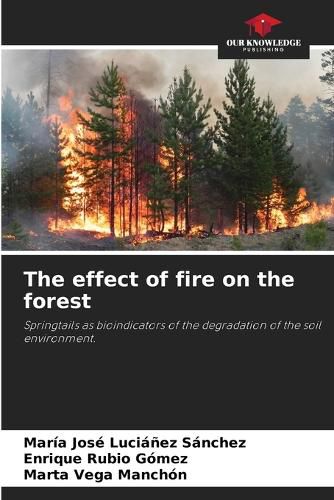Readings Newsletter
Become a Readings Member to make your shopping experience even easier.
Sign in or sign up for free!
You’re not far away from qualifying for FREE standard shipping within Australia
You’ve qualified for FREE standard shipping within Australia
The cart is loading…






Soil is a limited and non-renewable natural resource that performs multiple ecosystem or environmental services, including the regulation of biogeochemical cycles, carbon fixation, and water storage and filtration. A multitude of organisms live in it: microorganisms, numerous animal phyla and microflora species, making it the most biodiverse natural ecosystem in any region. Soil mesofauna, which include arthropods between 0.2 and 2 mm in size, such as mites and springtails, are particularly abundant. They are also sensitive to natural disturbances or those caused by human activities, which makes them bioindicators of soil quality and fertility. It is essential to investigate the disturbances that can affect these edaphic communities in order to understand the dynamics and state of forest ecosystems. This work aims to contribute to the study of the effect of fires on the forest floor, using as a bioindicator the alterations in the populations of springtails, the most relevant group of microarthropods in the edaphic environment.
$9.00 standard shipping within Australia
FREE standard shipping within Australia for orders over $100.00
Express & International shipping calculated at checkout
Soil is a limited and non-renewable natural resource that performs multiple ecosystem or environmental services, including the regulation of biogeochemical cycles, carbon fixation, and water storage and filtration. A multitude of organisms live in it: microorganisms, numerous animal phyla and microflora species, making it the most biodiverse natural ecosystem in any region. Soil mesofauna, which include arthropods between 0.2 and 2 mm in size, such as mites and springtails, are particularly abundant. They are also sensitive to natural disturbances or those caused by human activities, which makes them bioindicators of soil quality and fertility. It is essential to investigate the disturbances that can affect these edaphic communities in order to understand the dynamics and state of forest ecosystems. This work aims to contribute to the study of the effect of fires on the forest floor, using as a bioindicator the alterations in the populations of springtails, the most relevant group of microarthropods in the edaphic environment.